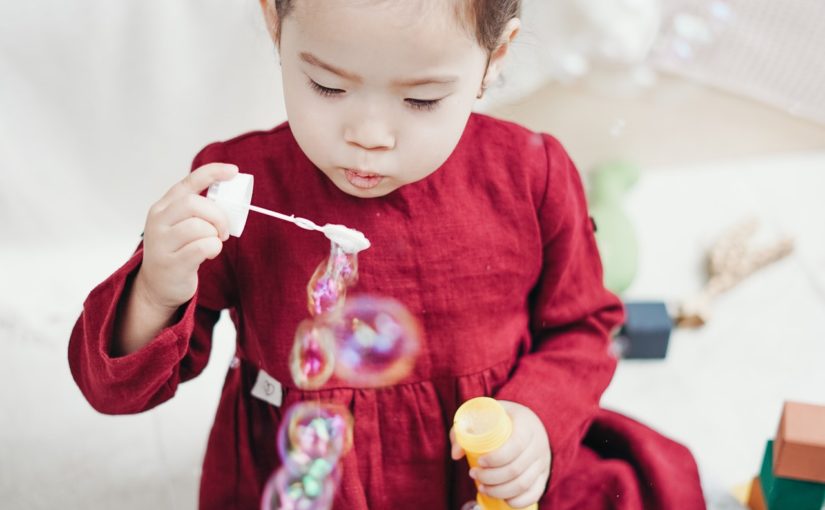Why are bubbles such an important toy for early learning? Besides being fun and motivating for young(and even older) children, it’s a simple way to engage them with you! When they are actively engaged in watching them form and float, they will then move to try to touch them. You can model action words such as, “Pop!” or “Blow!”, and descriptive words such as “Big!” or “Little”. Your child will want more to continue this activity, so you can wait for them to ask for “more” or ask them if they want “more”. This will give them an opening to respond by imitating “more” or respond “yes” or “no”(verbally or non-verbally). As they get older and more mobile, you can give them directions to “stomp”, “clap”, “kick”, or “poke” the bubble to pop it. Also, you can teach them to blow bubbles which is important to build awareness of their mouths and what each part(cheeks, lips, tongue, jaw) has to do to successfully blow bubbles. If they aren’t able to round their lips to blow through a wand, you can find bubble blowers on line or at a local toy store that they dip one end in the bubbles and blow through the other. They will be so proud of themselves when they blow their own bubbles AND have a blast taking turns with you to see who can blow the biggest bubble!
Sounds/words to include: bubble, blow, pop, kick, stomp, clap, poke, big, little, more, all gone, oooo, wow, me, my turn, etc.
